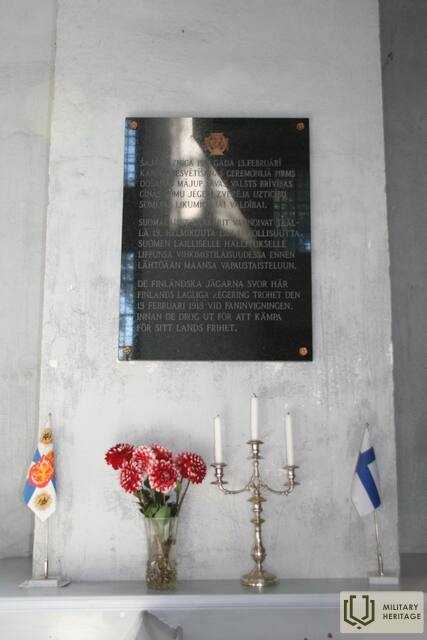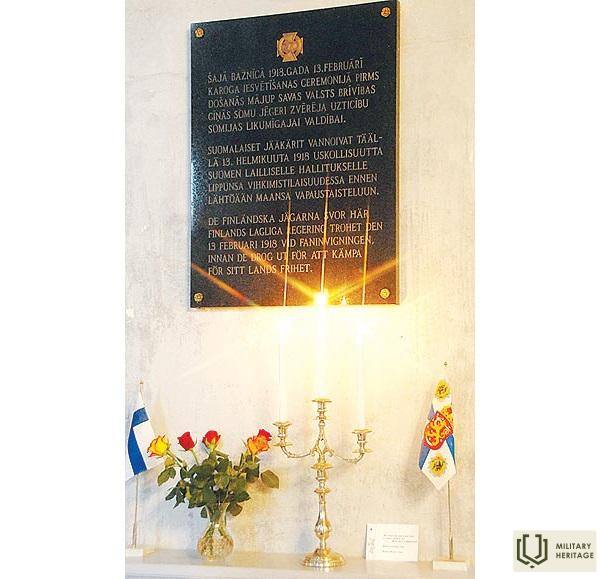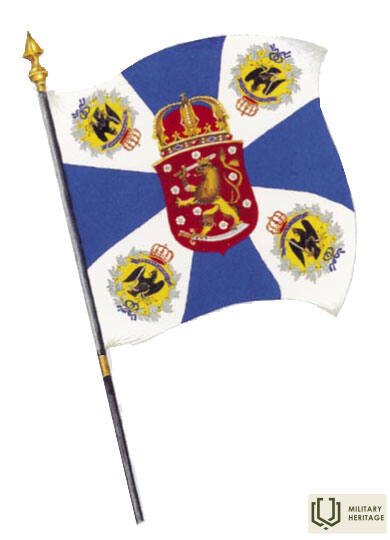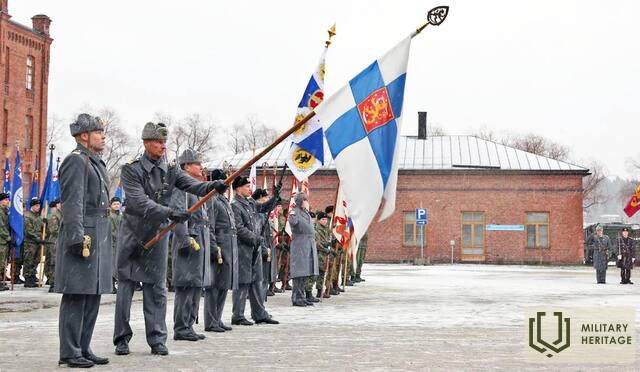Memorial plaque to the Finnish Jaegers in the Holy Trinity Cathedral in Liepāja
Memorialinis vieta

 216
216




A memorial plaque dedicated to the Finnish Jaegers is located in Liepāja Holy Trinity Cathedral, Lielā iela 9.
The Finnish Jägers were a unit of the German Empire, formed by volunteers from Finland, which, under the name of the 27th Royal Prussian Jäger Battalion, took part in the First World War battles on the Eastern Front of Latvia in 1916-1917.
During World War I, the Grand Duchy of Finland was part of the Russian Empire and many Finns wanted a German victory in the war in order to promote the establishment of an independent state. On 20 November 1914, the Finnish Independence Movement was founded in Helsinki, which also planned to form the armed forces of an independent state. When the German government confirmed its readiness to train the Finns in January 1915, the recruitment of volunteers began and by the spring of 1916 almost 2,000 soldiers were stationed in Germany and were named the 27th Royal Prussian Jäger Battalion.
From June 1916 the battalion was on the Riga front, when it was moved to Liepaja until March 1917. After the February Revolution, the Russian Empire began to collapse and on 6 December 1917 the Finnish Parliament declared independence.
On 13 February 1918, the Battalion swore allegiance to Finland in the Holy Trinity Church in Liepāja. On 15 February 1918, the battalion left the port of Liepaja by ship to return home to the port of Vasa and take part in the Finnish Civil War against the Reds, who had staged a coup d'état on 27 January 1918. The well-trained and combat-experienced Jägers formed the core of the Finnish national army and a large number became commanders during the Second World War.
The battalion's flag, consecrated in Holy Trinity Church, became the first flag of independent Finland.
Susijusi laiko juosta
Susijusios temos
Susijusi istorija
Suomijos jėgerių vėliavos pašventinimas Liepojos Šventosios Trejybės katedroje
Pirmoji Nepriklausomos Suomijos vėliava buvo pašventinta 1918 metais Liepojoje, Švč.Trejybės bažnyčioje, kur suomių jägeriai prieš išvykdami namo prisiekė būti ištikimi teisėtai Nepriklausomos Suomijos vyriausybei.
Suomijos savanorių pulko „Šiaurės berniukai“ mūšis Bejoje
1919 metų vasario 23 dieną suomių savanorių pulko „Šiaurės berniukai“ žvalgybos dalinys, tikėdamasis gauti papildomų ginklų ir amunicijos, atvyko į Beja School upės daubą, kur įvyko susirėmimas su bolševikais (Babeckos mūšis). Šiame mūšyje krito 10 suomių pulko karių.
Apie Suomijos jėgerius Latvijoje
Suomijos jėgerių istorija įdomi tuo, kad ji itin panaši į Latvijos karių likimus Pirmajame pasauliniame kare ir didelę jų svarbą kuriant tautinę valstybę. Pirmasis pasaulinis karas taip pat buvo galimybė suomiams padėti pamatus Suomijos nepriklausomybei ir jos kariuomenės sukūrimui. Šaltinis aprašo įvykį, kai Latvijoje atidengiamas paminklas Suomijos jėgeriams.









